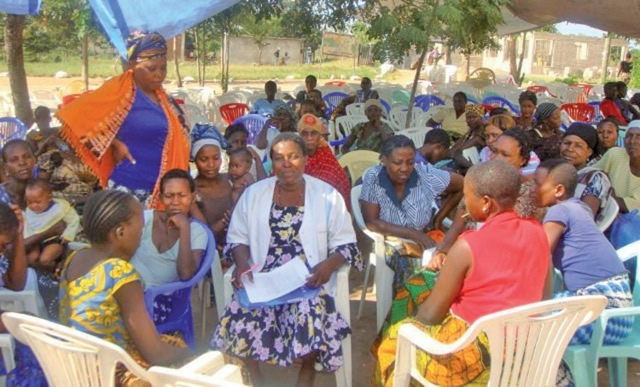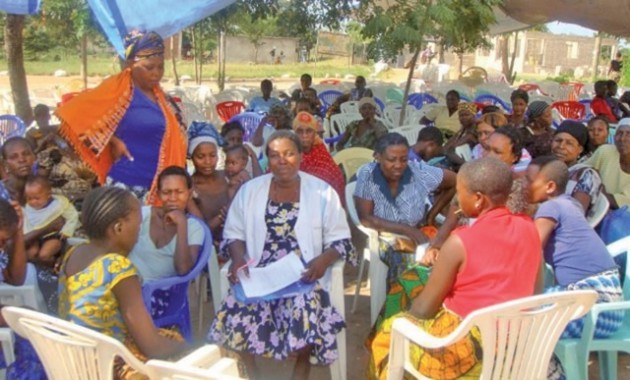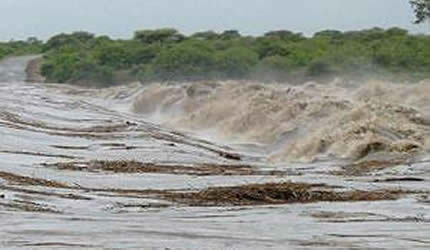Hard realities on cancer spread in Africa

Dr Oresto Munishi and Dr Heri Tungaraza : Correspondents
The incidence of cancer has increased from 12,7 million in 2008 to 14,1 million in 2012 globally. This trend is projected to continue to rise a further 75 percent. At least this is the bleak reality illustrated by official World Health Organisation (WHO) reports. That means this increase will bring the number of cancer cases close to 25 million over the next two decades – from today.Unfortunately, Sub-Saharan Africa is not exempt from this growing cancer burden. WHO estimates that, by the year 2030 cancer and other non-communicable diseases may overtake some infectious diseases as leading causes of deaths in Sub Saharan Africa.
Various reliable reports have it that in 2030, the proportion of cancer deaths in Africa will be 77 percent of all deaths, as compared to 32 percent and 58 percent in Europe and United States respectively. Africa is disadvantaged due to its ageing and growing population that together with Asia, Central and South America will account for 60 percent of total world cancers.
These statistics somewhat give a bleak future for the continent with regards to cancer, but there is a policy and structural way that, if be adopted, could counter this.
This is what our writing seeks to address. Addressing the cancer burden in Africa requires a multi-disciplinary approach that includes, among many, well designed policies backed by a political will, improved knowledge on cancer and most important heightened awareness on cancer risks and warning symptoms.
The result will likely be an increase in early care seeking behaviour for cancer related illnesses-, something that is currently significantly low among citizens of Africa.
Seeking care early has proved effective as data around the world testifies that cancer and in fact any disease when caught early improves chances for cure.
On this note, about one-third of all cancer cases could be prevented; making prevention one of the most cost effective long term strategies to control this deadly disease.
For a long past, increased awareness to cancer symptoms and signs has changed how cancer is viewed in developed countries.
In the US for example, the medical culture of routine well-child visits, annual check-ups, public health awareness campaigns, in addition to advanced diagnostic technology has allowed for early detection of a myriad diseases. Unlike in our motherland (Africa), cancer does not have to be a death sentence in the US or Europe.
For centuries, late presentation at diagnosis and therefore delayed treatment initiation has been an unattended outcry of cancer care-providers, activists, patients and governments across Africa.
We have heard it said again and again, through media and most other sources of communication, that for cancer; the disease stage reflects how advanced or spread the cancer cells are throughout the body, and as the stage progresses, the chances of a successful curative treatment diminishes.
Patients that would have otherwise benefited from cure of disease if presented early will instead be started on a palliative care. This care literally means easing the patient’s suffering so he/she eventually dies in a peaceful manner (in medicine called death with dignity).
It is also important to admit that even palliative care currently available in Tanzania is in its infancy and hence has many setbacks due to lack of drugs (opionds like morphine) to reduce pain and absence of a well-established home based care around the country.
More over, a palliative care policy is generally not yet strong in the local healthcare system. Medical providers have become accustomed to telling care-givers shortly after a cancer diagnosis at the hospital that there is nothing for them to do for the patient, and that the only plan left is to try to make him or her as comfortable as possible as they wait to meet their maker.
Even with all these painful endings of our loved ones, nothing really has changed for decades. Patients continue to present late to hospital and many succumb to a bitter end of life. Those who remain behind have to learn to live with the pain of losing their loved ones in a very sorrowful manner.
This trend can be stopped as it has in many other countries through increased awareness of the nature of the disease we are dealing with, combined with preventive strategies, change in life-styles and availing screening programs and improved diagnostic and treatment centres around the country.
During the early 20th century in the US and other developed nations, solution adopted for this disease followed a multi-disciplinary style of engaging all stakeholders including the government, private sector, politicians and the entertainment industry.
To do that in our setting all aspects of health care provision, from expertise to equipment; to improve diagnostic technology and quality of training need to be scaled up. We also agree that cultural beliefs and traditions that prevent our locals from seeking care timely and appropriately should be mitigated by proper education of the masses to help alleviate ignorance. Needless to say, all barriers to access of healthcare by the common Mwananchi; be it cost or distance, should be tackled at all levels.
We can not be blind to the fact that cost of consultation fees or transportation alone may preclude an individual from seeking care. Due to the poverty that bites into the families of many Tanzanians, majority survives on one meal per day. Reports show some 68 percent of its 47,7 million people live on less than $1,25 a day (World Bank 2014).
The high costs of cancer tests and medication has kept many Tanzanians away from hospitals making it common for patients to wait until the pain of the tumour becomes so severe that they give in to the financial burden and present to health care providers out of desperation Kilimanjaro study, interesting findings Studies from home and broad have repeatedly shown the importance of raising awareness of cancer risks and its signs and symptoms in the war against this major illness.
One of the best research examples is the one done in Tanzania, earning global respect and recognition. This was done in Kilimanjaro by the former Ocean Road Cancer Institute Director (Dr. T. Ngoma) and his team.
In this interesting study, two villages were randomly chosen, and in one village, an active form of cancer case finding by “basically trained” medical aides was adopted. While in the second village people were left to seek care on their own as it is in the current Tanzanian standard of care.
At the end of three years of the study, diagnosis of stage 1 & 2 cancer cases in the intervention village changed from 23 percent (first year) to 74 percent (end of third year); while in the control village stage 1 & 2 cancer diagnosis only changed from 11 percent to 37 percent in the same time-interval.
This is a good example of how simple basic training can bring about a huge positive impact in terms of down-staging cancer diagnosis in a resource poor country. Many other studies done in different ways and settings have shown similar results.
This is proof that when people are adequately educated in recognizing simple but critical cancer signs, and encouraged to attend to medical care following such realizations, cancer would be diagnosed at a stage when cure can still be achieved.
In this same country however, media based health education and organized public campaigns is lacking and so cancer awareness has not improved earnestly and most diagnoses happen at very late stages of the disease. A recent study conducted in Kilimanjaro (by authors of this article) shows that knowledge and awareness of cancer risks is very diverse.
While knowledge to some group 1 agents (proved to be carcinogenic to human) such as smoking has highly improved, same is very low for other potentially harmful agents such as alcohol use and infections (classified carcinogenic by WHO).
For instance, whereas 86 percent of all people appear to have a good knowledge on the potential carcinogenicity of smoking (ability to cause cancer), only 32% know that infection with type 1 HIV (virus) increases cancer risk as well. Knowledge is equally low also among vulnerable groups such as people living with HIV.
In the normal health care setting in Tanzania, people living with HIV are provided with health education when they attend clinics. This fact would make one think that this group has a better knowledge about this additional risk factor.
Equal to cancer risks, awareness of cancer warning symptoms/signs have not improved to greater depths either. As pointed out by Dr. Ngoma’s study, on-surface lesions such as warts or lamps increasing the need to seek care. The study in Kilimanjaro also found out that people are more cautious when they see such obvious outgrowths in their bodies.
Previous campaigns by MEWATA seem to have born fruits as 90 percent of people would be worried if they had a growing lump in their breasts (women) or an obvious thickening spot on skin (70 percent). However, only 39 percent would be startled if they observed changes in bowel or bladder habits. The later remained the same even among residents of areas known for rice cultivation which are also well known for bilharzia.
One hard truth from these studies is the fact that, even with some fairly good knowledge on cancer risks and awareness of warning symptoms (although invariably), only a very small proportion of residents have ever screened for any cancer in their lifetime, despite these service being available in their neighbourhood or easily within reach, and many being free of charge.
Study show that only 19 percent of people had ever screened for cancer at the time of study conduction. This observation too underscores the lack of awareness of cancer among Tanzanians. It reflects the unfortunate position in which people are. More so because it has been proven how significant of a role screening has played in reducing deaths due to cancer.
As western trained medical doctors, we don’t shun alternative medicine practitioners (we can argue!), but the problem arises when they delay patients from obtaining proper diagnosis and care.
Cancer never waits. We stand in the line of a debate because even research has shown, for some reason our people have preference for traditional medicine than modern medicine. In the Kilimanjaro study, 10 percent of people said, given options they would prefer traditional medicine if themselves or relatives had cancer, and 20 percent said they would mix both traditional and modern medicine.
This is not the first time we hear that cancer patients seek help from practitioners of alternative medicine first before they switch to modern medicine.
If we all take the responsibility of educating ourselves, our relatives, our clients (both for modern and traditional medicine practitioners) about which signs or symptoms warrant danger; medical help will be sought early enough, and in that way we would have played a key role in the fight against cancer.
We all know how that earnestly improved voluntary counselling and testing. Likewise, robust community focused public health awareness and screening campaigns are needed for non-communicable diseases (such as cancer) to encourage early detection and hence chances for curative treatment.
With everyone fulfilling their roles, early diagnosis, easy access to treatment facilities and support groups for all people struggling with this disease can be a reality. — Tanzania Daily News (Dar es Salaam).
About the authors of this article; Dr. Munishi (MD, MPH) PhD candidate in the University of Tampere — Finland (Cancer epidemiology).











Comments